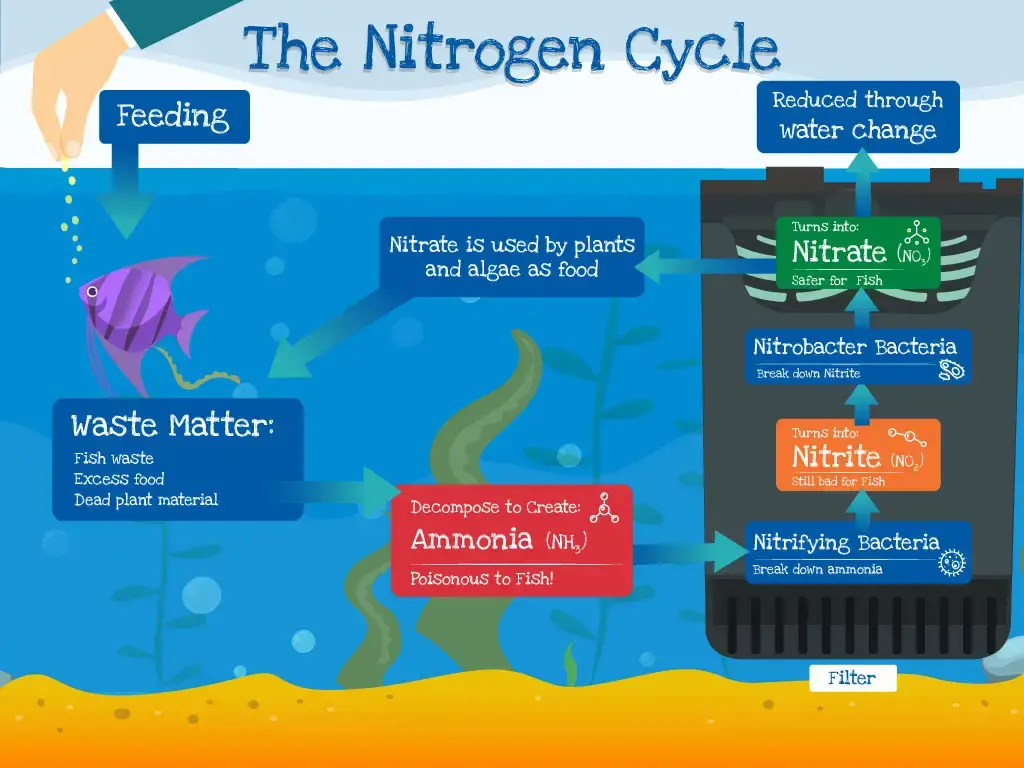
Setting up your first aquarium is exciting, but there’s one crucial step you can’t skip — water cycling. If you add fish too early or skip the cycle altogether, you could unknowingly create a toxic environment that harms your aquatic pets. This guide will walk you through the basics of aquarium cycling, why it matters, how to do it right, and how to know when it’s complete.
What Is Water Cycling?
Water cycling (also called the nitrogen cycle) is the natural process that establishes beneficial bacteria in your aquarium. These bacteria break down fish waste, uneaten food, and other organic matter into less harmful substances, keeping your tank environment safe.
In simple terms, cycling makes your aquarium livable for fish by creating a biological filtration system that processes ammonia into nitrite, and then into nitrate, a much less harmful substance that can be removed with water changes.
The Nitrogen Cycle Explained
Let’s break down the cycle:
Ammonia (NH₃/NH₄⁺): Comes from fish waste, uneaten food, and decaying matter. Ammonia is highly toxic to fish.
Nitrite (NO₂⁻): Bacteria (Nitrosomonas) convert ammonia into nitrite. Nitrite is still dangerous to fish.
Nitrate (NO₃⁻): Another type of bacteria (Nitrobacter) converts nitrite into nitrate. Nitrate is relatively safe in low concentrations and is removed through water changes or absorbed by live plants.
This full cycle usually takes between 4 to 6 weeks, but it’s crucial to test your water regularly to know when it’s complete.
Why Cycling Your Tank Is So Important
Skipping the cycle can lead to what's commonly known as "new tank syndrome," where ammonia and nitrite spike quickly, poisoning your fish before bacteria have a chance to establish.
Proper cycling:
- Prevents fish deaths
- Supports long-term tank stability
- Creates a thriving, self-sustaining ecosystem
How to Cycle an Aquarium: Step-by-Step Guide
There are two main ways to cycle a tank: fishless cycling and fish-in cycling. For beginners, fishless cycling is highly recommended — it’s humane and more controlled.
Fishless Cycling Method
What you’ll need:
- Ammonia source (pure ammonia, fish food, or shrimp)
- Water test kit (API Master Test Kit is popular)
- Dechlorinated water
- Patience
Steps:
- Set up your aquarium — gravel, filter, heater, decorations.
- Dechlorinate your water — chlorine kills beneficial bacteria.
- Add ammonia to simulate waste (dose up to 2–4 ppm).
- Wait for nitrites to appear — test daily. This shows that ammonia-processing bacteria have arrived.
- Wait for nitrates to appear — nitrites drop and nitrates rise.
Keep feeding the tank with ammonia to maintain the cycle.
The cycle is complete when:
- Ammonia = 0 ppm
- Nitrite = 0 ppm
- Nitrate = detectable (20–40 ppm)
Then you can do a large water change (50%) to reduce nitrate before adding fish.
Fish-In Cycling (Not Recommended for Beginners)
This method involves adding hardy fish from the start and doing frequent water changes to keep toxins low while bacteria grow. It’s riskier, more stressful for fish, and harder to manage unless you're experienced.
How Long Does the Cycle Take?
Typically:
- Week 1: Ammonia builds up
- Week 2–3: Nitrites spike
- Week 4–6: Nitrates appear, ammonia/nitrite drops to zero
Using bacteria starters like Seachem Stability or FritzZyme can speed things up, but patience is still key.
Tips for a Smooth Cycling Process
Test often: Every 2–3 days, especially during the first few weeks.
Avoid cleaning your filter media during cycling — that’s where bacteria grow!
Don’t overfeed: Even in a fishless cycle, too much food can foul the water.
Add live plants: They absorb nitrates and support bacteria.
Keep temperature stable: Most bacteria grow best around 77–86°F (25–30°C).
When Is It Safe to Add Fish?
Once your ammonia and nitrite are consistently at 0 ppm, and nitrate is present, it’s go-time! Start with just a few fish and add slowly over time to avoid overwhelming the bacteria.
After the Cycle: Maintenance Basics
Cycling is only the beginning. To keep your aquarium healthy:
- Do weekly 20–30% water changes
- Vacuum substrate to remove waste
- Monitor water parameters monthly
Never fully clean filter media in tap water (use tank water instead)
Final Thoughts: Cycle Right, Enjoy for Life
Learning the basics of water cycling is one of the best things you can do as a beginner aquarist. It’s the difference between constant frustration and having a beautiful, healthy tank your fish can thrive in.
Taking the time to cycle properly sets the foundation for success — and trust us, your fish will thank you.
